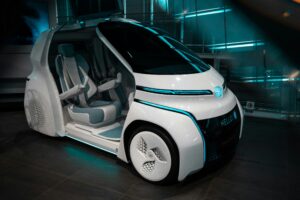Imagine a world where your morning cup of coffee is delivered to you not by a barista, but by a robot. Sounds like something out of a sci-fi movie, right? Well, the future is now, thanks to the rise of autonomous delivery robots in the food and beverage industry.
These pint-sized mechanical marvels are revolutionizing the way we think about food delivery, offering a faster, more efficient, and contactless alternative to traditional methods. According to a recent report by Allied Market Research, the global autonomous food delivery robots market is projected to reach $34.64 million by 2026, with a compound annual growth rate of 49.2%.
But it’s not just about convenience and novelty. As Rob McDonald, CEO of RoboEats, a leading provider of autonomous food delivery solutions, puts it, “These robots aren’t just delivering food – they’re delivering peace of mind. In a post-pandemic world, where safety and hygiene are top concerns, autonomous delivery robots are a game-changer.”
With major players like Starship Technologies and Kiwibot leading the charge, it’s clear that autonomous delivery robots are here to stay. And as they become more integrated into our daily lives, the possibilities are endless. From delivering groceries to the elderly to transporting medical supplies in emergencies, the impact of these robots goes far beyond just food delivery. The future is indeed bright – and robotic – in the world of autonomous delivery.



